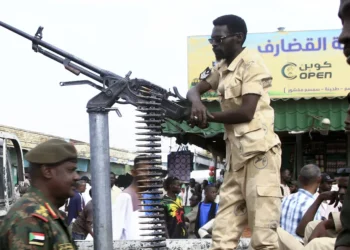The International Rescue Committee (IRC) is scaling up its response to the East African drought – the worst seen in 40 years – with $5 million to provide urgent humanitarian assistance in Ethiopia, Kenya and Somalia.
The IRC warned that the gap in funding for the humanitarian response plans for the region will cost lives and as such, more funding is needed to support the 25 million people in East Africa facing extreme hunger and water shortages. The Committee therefore, calls for a coordinated, urgent response from donors and the international community to protect lives, livelihoods and prevent famine.
Frank McManus, Country Director for Ethiopia at the IRC said the La Nina weather patterns and climate change has led to the driest conditions seen in Ethiopia in more than 40 years leading to 307,000 people becoming displaced as they search for water, food and new pastures for farming. McManus stated that humanitarian needs in Ethiopia are soaring as drought is exacerbated by ongoing conflict across the country.
“The IRC has committed USD2.5 million to providing critical services to people in Ethiopia alone living through this severe drought, but much more needs to be done in order to meet the scale of need. The 2011 drought was catastrophic, more than 260,000 people in Eastern Africa lost their lives and millions others went hungry as a result of extreme drought and failed crop production. This year is on track to be much worse. We urge donors, the international community and civil society to collaborate on managing this massive shock”.
Frank McManus
Increasing cost of fuel risks driving up food prices
Frank McManus said the crisis in Ukraine will make matters worse. He indicated that increasing cost of fuel, risks driving up food prices and fewer people will be able to access wheat imported from Ukraine and Russia- the source of 90% of East Africa’s imported wheat.

“The IRC is responding to the drought in Kenya, Ethiopia and Somalia, providing essential services such as water and cash assistance to those impacted. Without investing in more humanitarian support, we will see a longer term impact on the population with their livelihoods and assets eroded. IRC is scaling up its response in southeastern Ethiopia through this contribution but much more needs to be done to meet the scale of needs”.
Frank McManus
IRC’s operations in East Africa
The IRC has been working in the Horn of Africa region since 1981. In Ethiopia, IRC reaches clients through programs in environmental health, health, education, child protection, economic recovery and development, and women’s protection and empowerment in the region.
In Somalia, where the IRC began working in 1981 in the aftermath of the Somalia-Ethiopia conflict, the IRC works to address the immediate humanitarian needs of the Somali population while simultaneously supporting the resilience and development of the country.
In Kenya, IRC provides life-saving emergency aid, currently supporting 300,000 people with primary and reproductive health care, nutrition support for malnourished children, women’s protection and empowerment, and economic and livelihood support helping refugees and vulnerable Kenyans to start businesses and rebuild their lives.
READ ALSO: Nigeria Hosts Ghana In Decisive World Cup Playoff Clash In Abuja Today





















